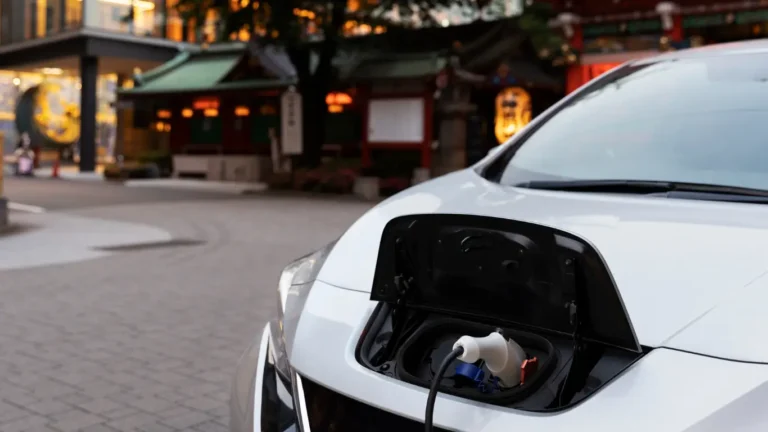
Auto Academy
Sell My Car in Toronto – The Ultimate Guide (2025 Edition)

This guide will walk you through everything you need to know to sell your car (i.e. sell a used car) in Toronto / Ontario — from preparing the vehicle, to choosing where and how to sell, handling the paperwork, and avoiding scams.
Why Selling Smart Matters in Toronto
Toronto and the Greater Toronto Area (GTA) is one of Ontario’s strongest used car markets. There are many buyers, but also intensifying competition. A poor listing, missing paperwork, or a shady impression can cost you thousands. With the right strategy, you can maximize your sale price, minimize time lost, and reduce legal risks.
Seasonal market dynamics also matter: spring and summer typically see higher demand and better pricing, while the depths of winter may soften offers.
Moreover, Ontario has specific rules around selling used vehicles (UVIP, safety certificates, lien checks, etc.) that you must comply with to avoid legal issues.
Read More: Typical Car Payment in Toronto
Step 1: Get Your Car Ready
Before listing “sell car online” or “sell used car,” take steps to prepare your vehicle. A well-maintained, clean, and documented car attracts more serious buyers and justifies a higher price.
A. Clean, Detailing & Cosmetic Fixes
- Wash thoroughly, inside and out. Shampoo carpets, clean seats, wipe all panels, remove odors.
- Fix small scratches, dents, or trim damage (if cost-effective).
- Polish wheels, clean the engine bay if possible (visible parts).
- Replace or repair broken bulbs, burnt-out interior lights, non-functioning features (if minor).
- Ensure the car is safe and comfortable for test drives (tires inflated, lights working, fluids topped up).
These small efforts often give outsized returns.
B. Maintenance & Mechanical Checks
- Change oil, filters, top up fluids; perform any basic servicing to show buyer you maintained it.
- If you know of mechanical issues, decide: either fix them or sell as-is (but disclose).
- Consider having a recent inspection or providing documentation of recent servicing.
- Check and replace worn tires, brakes, if they are near end-of-life (if cost reasonable).
C. Gather Documentation & Service History
Buyers often ask for:
- Maintenance / repair records
- Warranty documents (if still valid)
- Recall or safety bulletin history
- Previous ownership history
- Vehicle registration papers, title / permit
Having these ready builds buyer confidence.
D. Check for Liens / Outstanding Debts
Before you sell, verify whether there's a lien or debt on the car (e.g. a loan). The buyer will be hesitant if there’s hidden financial encumbrance. The Used Vehicle Information Package (UVIP) in Ontario includes lien info.
Read More: Used Toyota Inventory
Step 2: Determine a Realistic Price (“What is my car worth?”)
Pricing is critical. Too high → no traction; too low → you leave money on the table.
A. Check Market Comparables
- Use listings for your make/model/year in Toronto / GTA (in the website like AutoTrader, Kijiji, etc.).
- Filter by mileage, condition, trim, options.
- Factor in location premium (Toronto/GTA tends to command higher prices).
Use online valuation tools (Canadian Red Book, Canadian Black Book, etc.).
B. Understand Wholesale vs Retail Value
The wholesale (or “book”) value is a benchmark dealers use. Your price may be between wholesale and retail depending on condition.
Be realistic about wear, mileage, accident history, and repairs needed.
C. Leave Negotiation Margin
List your car ~5–10% above your lowest acceptable price to allow room for haggling.
D. Price Based on Sale Channel
- Private sale often fetches the highest price (but needs effort).
- Sell to dealer / trade-in will offer less because dealer must resell.
- Instant-offer online platforms may give a bit less, but convenience is high.
Decide whether time/effort or maximizing price is your priority.
Read More: 9 Car Dealer Fees to Never Pay
Step 3: Choose Where & How to Sell
There are multiple channels. You can even combine some.
A. Private Sale (You to Buyer)
- Pros: Typically, highest net price
- Cons: You handle everything (ads, screening, viewings, test drives, paperwork)
B. Sell to Dealer / Trade-In
You go to a dealership and sell your car (with or without buying another).
- Pros: Quick, less hassle, often guaranteed sale
- Cons: Lower payout compared to private sale
C. Selling Car Online: Online Marketplaces / Instant-Offer Platforms
Sites that facilitate “sell car online Canada” or “instant cash offer” models:
- AutoTrader (with Instant Cash Offer)
- Kijiji Autos
- CarDoor: they buy your car online, pick it up, pay you via certified cheque or Interac transfer.
- Other dealer-matching services
These offer convenience; you trade off some margin for speed and ease.
D. Wholesale / Auction / Salvage Buyers
If your car is not in great shape or needs major repairs, you might sell it to a wholesale buyer or salvage yard. You’ll likely get the lowest return but benefit from minimal effort.
E. Hybrid / Broker Services
Some services act as brokers or facilitators: you hand over the effort of marketing, buyer matching, paperwork, for a fee or commission. This can be ideal if you don’t want to self-manage. (CarRookie is one example — see below.)
Read More: Is a Used Toyota Camry Worth It?
Step 4: Create a Strong Listing / Marketing
This is where you compete for attention among all the “sell used car” listings. A strong, transparent, well-crafted listing builds trust.
A. Photos & Videos
- Use good lighting (late afternoon, diffused light).
- Include multiple angles: front, back, sides, wheels, interior, dashboard, engine bay, trunk.
- Capture interior details, infotainment, odometer, special features.
- Show any flaws or damage (hone your credibility).
- If possible, include a short video walk-around or driving video.
- Use high resolution, clear images.
B. Title & Description
In your listing:
- Use the main keyword “sell my car” (or “sell used car”) naturally in the title or description.
- Be honest and specific: year, make, model, trim, mileage, features, condition, recent maintenance, known issues.
- Mention whether you will provide UVIP, safety certificate, whether the car is “as is” or certified.
- State your asking price (or “or best offer”) to reduce endless low-ball inquiries.
- Provide contact preferences (phone, text, email), and your location (Toronto/GTA).
- Use key phrases: “sell car online,” “sell used auto,” “cars sold for cash,” etc.
C. Timing & Exposure
- Post simultaneously on multiple platforms (AutoTrader, Kijiji, Facebook Marketplace, local classifieds).
- Refresh or bump the listing after a few days.
- Use “promoted” or “featured” listing options, if available, to gain more visibility.
- Consider posting in local GTA car-buyer groups, forums, social media.
Read More: Better Car Loan Rates
Step 5: Screening Buyers, Negotiation & Test Drives
Once inquiries come in, your role is to conduct the selling process smartly and safely.
A. Screening & Prequalification
- Ask buyers reasonable questions: where are they located, what is their timeline, how will they pay.
- Verify identity (driver’s licence), ask for proof of insurance if they want to test drive.
- Meet in safe, public locations (well-lit, busy parking lots, police station lots).
- Bring a friend or inform someone about the meeting.
B. Test Drive Safely
- Accompany the buyer during test drive, or have them drive with your supervision.
- Limit the route and return the car to your starting point.
- Ask for a copy of their driver’s licence and proof of insurance before handing over the keys.
- Do not allow them to drive off without contract / deposit.
C. Negotiation Tactics
- Start firm but be open to reasonable offers (within your margin).
- Be transparent about known issues and repairs—you’ll build trust rather than risk a deal falling through.
- If buyer demands sudden, last-minute discounts for vague issues, re-check their testimony, or ask for independent inspection.
- You may counter with inclusion or exclusion of safety certificate, inspection, or repairs.
Read More: How to Buy a Used Car in 2025
Step 6: Finalizing the Sale & Legal Paperwork
This is where many sellers make critical errors. get this right to protect yourself.
A. Required Documents in Ontario
As a seller in Ontario, you must provide:
- Used Vehicle Information Package (UVIP):
Ontario law requires you to provide this to the buyer. It contains registration history, lien info, average wholesale value, etc. - Bill of Sale / Agreement of Purchase & Sale:
Should include names and addresses of buyer & seller, sale price, date, mileage, VIN, make/model, “as-is” or certified status, signatures.
The UVIP includes a Bill of Sale section that many sellers use. - Application for Transfer:
On the back of your ownership (vehicle permit), there is a section to complete for the transfer. - Safety Standards Certificate (SSC):
If the buyer plans to register the car, they will require a safety certificate. It's your choice whether to get it yourself in advance (makes your car more attractive) or sell “as-is” with no guarantee.
The certificate is valid for 36 days. - Remove License Plates & Keep Plate Portion of Permit:
In Ontario, plates stay with the seller. The buyer will get new plates or use existing ones. - Notice of Sale / Report Sale to MTO (if applicable):
There is some mechanism to notify Ontario’s Ministry of Transportation that you sold the vehicle (so you’re no longer held liable).
B. Tax Implications & Buyer’s Responsibilities
- The buyerpays the retail sales tax (RST or HST) when registering the vehicle in their name; you as seller do not pay that.
- Tax is charged on the higherof sale price or the vehicle’s wholesale (book) value. If you believe the value is lower, the buyer can obtain an appraisal to support a lower taxable amount.
- If the car is 20 years or older, additional rules may apply (e.g. appraisal requirement).
C. “As-Is” Sales vs Certified Sales
- You can sell a car “as-is”(without a safety certificate), but you must clearly state that in the Bill of Sale / contract (e.g. include “sold as-is” wording). The buyer will be responsible for registration, repairs, and a safety inspection post-sale.
- If a regulated dealer sells “as-is,” there are specific conditions under OMVIC regulations.
D. Payment & Transfer
- Prefer secure, verifiable payment: bank draft, certified cheque, e-transfer, or cashier’s cheque.
- Don’t hand over keys or title until payment is cleared, signed, and documented.
- Complete all paperwork, and give buyer their copy.
- Advise buyer to register within the legal timeframe (typically 6 days in Ontario).
Read More: Should I Buy a New Car or Used Car?
Common Buyer Concerns & How You Address Them
As a seller, anticipate buyer doubts and proactively mitigate them.
- “Is this car safe to drive / in good condition?”
- Provide a recent inspection report or a safety standards certificate if possible.
- Be transparent about existing issues (engine, suspension, accidents).
- Offer to let them have an independent mechanic inspection at their cost.
- “Why is your asking price so high (or low)?”
- Show your comparables, condition, servicing history.
- Highlight recent repairs or upgrades.
- “Is there any lien or debt?”
- Show the UVIP which includes lien status.
- Confirm everything’s clear or let them verify independently.
- “Can you guarantee it?”
- If you are selling “certified,” explain the safety check.
- Otherwise disclose “as-is, no warranty.”
- “What if I find hidden problems later?”
- Use “as-is” wording in contract.
- Encourage independent inspection before finalizing.
- “How soon can I register it / drive it?”
- Explain purchaser needs to register within 6 days and that buyer handles registration and tax.
- By preempting these, you build trust and close faster.
Read More: How to Financing a Toyota in Ontario
Risks & Pitfalls (Scams, Curbsiders, Fraud)
Even in a solid market like Toronto, you’ll run into bad actors. Be cautious.
A. Curbsiders (Fake Dealers / Unlicensed “Sellers”)
These are individuals pretending to be private sellers but are actually unlicensed dealers buying and reselling vehicles. They may drive your car around with fake plates and leave you stuck in legal or financial trouble.
To protect yourself:
- Insist on full identity verification
- Always complete ownership transfer immediately
- Don’t let them drive away with your plates
- Use a secure meeting location
- Check for red flags (refusal to show UVIP, pushing for weird escrow terms, unwillingness to sign paperwork)
B. Overpayment / Fake Escrow / Shipping Scams
Some scammers “offer” to overpay, use fake escrow services, or arrange complicated shipping/pickup. Don’t accept third-party payment or shipping without verifying legitimacy.
C. Incomplete or Faulty Paperwork
If you fail to provide UVIP, Bill of Sale, or properly transfer ownership, you could remain legally liable (e.g. parking tickets, accidents).
D. Selling a Car with Hidden Problems
Failing to disclose prior damage, flood or frame issues, odometer tampering, or mechanical problems may lead to legal action by buyer. Be honest and document everything.
E. Payment Risk
Beware of counterfeit cheques, unverifiable funds, or transactions that “clear” but later bounce. Wait for full clearance before handing over vehicle and title.
Read More: Three Reliable Used Cheap Toyota Cars
What to Do After the Sale
- Notify your insurance company that the car is sold (cancel or transfer policy).
- Keep copies of all sale paperwork for several years.
- Return your license plates (if required) or cancel tags.
- If you still owe money on car (loan), ensure lien is cleared.
- Monitor for any post-sale issues (e.g. if buyer fails to register but still gets fines) — having documentation helps.
Read More: Private Auto Loan
When You Can’t Sell Privately: Consider a Dealership or Broker (CarRookie)
If you don’t want to navigate all these steps or your schedule is tight, using a dealership or broker service may be ideal.
One such option is CarRookie, a Toronto-area car dealership / brokerage that connects you to top agents and handles much of the hassle. You can “sell your car” through them, and they simplify the process.
They act as a trusted partner to help you transition your vehicle out, often offering a faster path to cash, handling paperwork, and matching you to agents who pay fair value. (Make sure to verify any such service is OMVIC-compliant and transparent.)
Read More: Buying Your First Car
Summary & Final Advice
- Selling your car in Toronto can be profitable, but you need preparation, transparency, and legal compliance.
- Clean and document your car, check liens, get your UVIP, decide whether to certify or sell as-is.
- Price realistically, market smartly, screen buyers carefully, and finalize with proper paperwork.
- Be cautious of scams, curbsiders, or shady deals.
If doing all this yourself seems overwhelming, consider using a dealership or broker like CarRookie that helps sellers (even those with poor credit) get connected to top agents and streamline the transaction.
By following this guide, you’ll be well positioned to sell my car in Toronto with confidence, avoid pitfalls, and get the best fair price possible.
FAQs
Yes — the same Ontario rules (UVIP, Bill of Sale, transfer, safety standards) apply to light trucks, SUVs, and other passenger vehicles. If the vehicle is over a certain weight (e.g. > 4,500 kg or used commercially), emissions or inspection requirements may differ.
In Ontario, if it’s a gift or to a “close family member,” there may be exemptions when transferring the vehicle, and tax may not apply. Check with ServiceOntario and the current rules.
The UVIP is a snapshot at the time you obtain it. It includes past registration history, liens, and book value. While there’s no formal “expiration,” buyers may consider an updated one more trustworthy.
If parts of the original manufacturer warranty or recall coverage remain applicable and transferrable, yes—include those documents and let the buyer know. This increases buyer confidence.
If you have properly transferred the ownership via the Bill of Sale, Application for Transfer, and notified as appropriate, your liability should be limited. Keeping records is crucial. If you fail to remove your name or plates, you may face issues like parking tickets.
You can sell your car privately, to a dealership, through a car-buying service, or online platforms like AutoTrader, Facebook Marketplace, or Kijiji.


